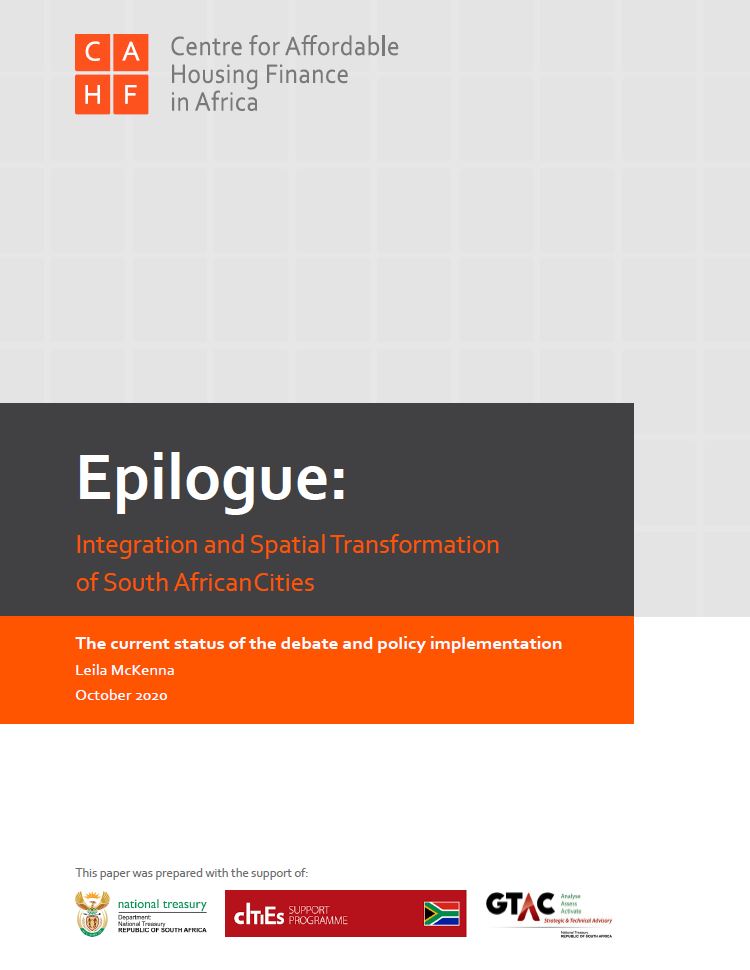Epilogue: Integration and Spatial Transformation of South African Cities
The current status of the debate and policy implementation

23 October 2020
Centre for Affordable Housing Finance in Africa
English
Report
Africa
This paper offers a brief review of current debates, policies, strategies and legislation adopted by government to promote spatial transformation and sustainable human settlements, and considers changes and shifts that have occurred over the recent period paying particular attention to why, despite the plethora of policies, strategies and legislation, South African cities continue to reflect high levels of spatial segregation and urban dysfunction.
The paper follows on from a series of four papers (titled ‘Integration and Spatial Transformation of South African Cities’) produced by the Centre for Affordable Housing Finance Africa (CAHF) in 2018 that outlined the key characteristics of cities and the major factors contributing to spatial disparity. This 'Epilogue' pulls the four papers together and discusses the main findings in the context of recent developments around land reform, housing and planning.
The paper, downloadable from the CAHF site, identifies three distinct but overlapping domains that determine the current framework for spatial integration: planning, housing and land reform. Each of these is defined by policy, legislation, programmes and administrative processes and budgets.
The main findings of this review are that the primary form of housing delivery has exhibited some key shifts in recent years, yet the dominant approach continues to be large-scale state-led settlement developments premised on the need to deliver at scale, and dependent on the assumption that the state needs to be the delivery agent as reflected in most of the Priority Human Settlement and Housing Development Areas. The land reform approach to urban areas is similar and tends to focus on supplying residential units. Its emphasis is, however, on strategic high-value areas where current property markets are preventing access to well-located land. Its responsibility and jurisdiction is however, limited to restoring ownership of those previously removed. These different ‘domains’ are all playing themselves out at a local level. Competing programmes, administrative systems, budgetary processes, accountability and objectives all seem to converge, often pulling government officials, plans and budgets in different directions.
Abstract based directly on source.


Comments